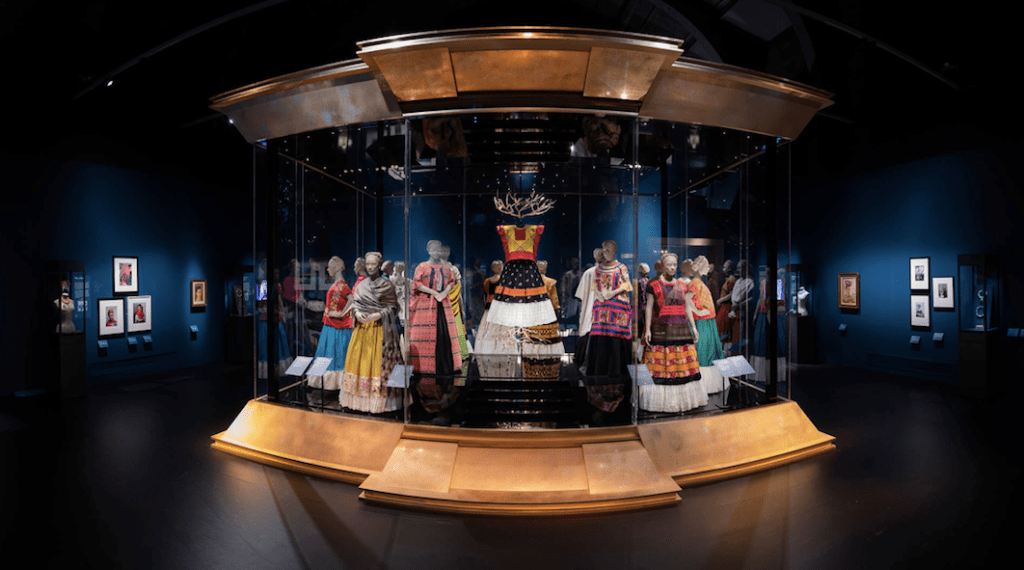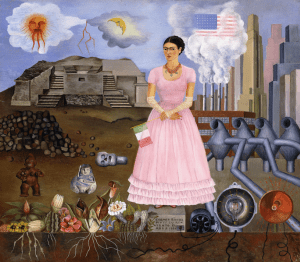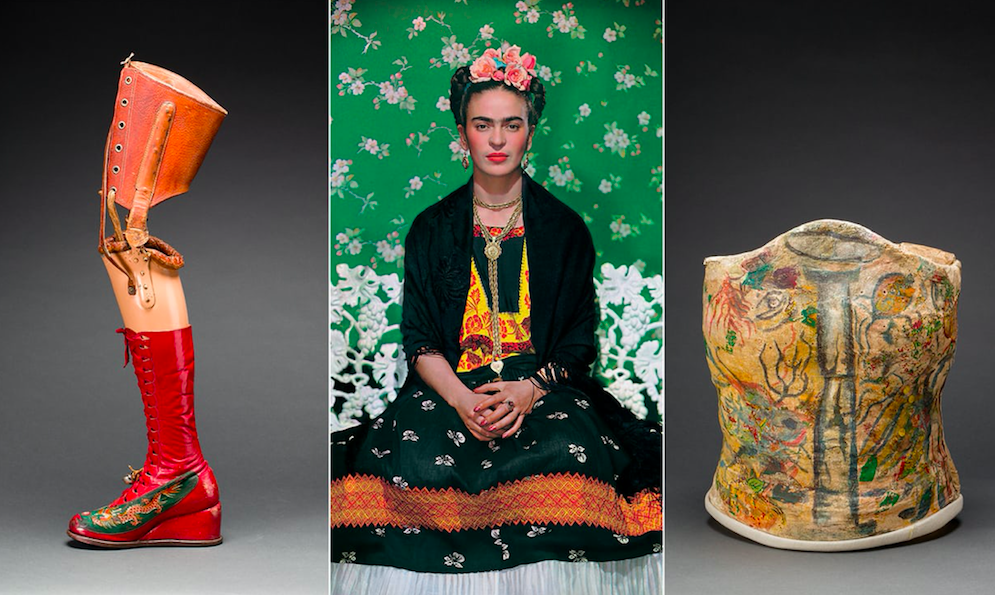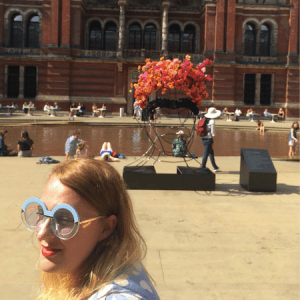Written by: on July 6, 2018
ave a think about the biggest obstacles you’ve had to overcome to achieve something you’d set your sights on. Now imagine what it would be like if that included having polio, being subjected to life-changing injuries after a major traffic accident and remaining “broken” on a permanent basis. This is just a glimpse into the background of Frida Kahlo, now one of the most recognisable and celebrated artists in the world – despite being chronically underrated in ‘The Art World’ during her lifetime.
The ‘Frida Kahlo: Making Her Self Up’ exhibition, currently on show at the V&A, explores the life events, relationships, political views and tenacious character of the artist – showing how these elements influenced and shaped her work. Frida’s story is told through photography, her belongings and perhaps crucially, through her clothing and jewellery. Although arresting portraits and vibrant still life works are also a key part of the exhibition – it is not a Frida Kahlo painting retrospective (to the annoyance of some critics, for some reason) and nor is it meant to be.
My experience of the exhibition was less like going to ‘see’ an exhibition and more like becoming immersed in Frida’s world. You could see how she literally made herself into a work of art – she painted her plaster corsets and intricately decorated her prosthetic leg – and was relentlessly creative in the face of pain and adversity. If that’s the only message you take away from the exhibition, then it has done its job.

The main room displaying Frida’s dresses is accessed through an immersive tunnel, taking you to a huge glass case showing some of her most photographed outfits – with golden antlers (or branches?) reaching through the main mannequin towards the ceiling.
Again, some critics have questioned the focus on her dresses in this exhibition. But her clothing, jewellery and even her hair, were so central to her work, that to me it is an exciting (and beautiful) new angle from which to view her life and work.

Political statements were important in her paintings, often highlighting the differences between Mexico and North America. You could see how dressing in traditional clothes was a continuation of these statements for Frida. Causing a stir wherever she went while in New York, she was ‘living’ her work. The exhibition also highlights how she used her outfits to show different sides of herself, the painting – ‘The Two Fridas’ being one example.
Other snippets from the exhibition give you quirky insights into Frida’s character. A perfume bottle used for carrying tequila around with her (I like her style!). The fact that she said she only liked her eyes and eyebrows, declaring the rest of her face to be quite masculine. (Those eyebrows though!)
The portraits are intense, drawing you in through Frida’s contemplative stares in ‘Self-portrait with Necklace’ or exploding with surrealist detail and an elegant headdress in ‘Self-Portrait as a Tehuana’. (Though Frida always rejected the idea that her work was part of the Surrealist Movement).
There are several quotes showing Frida’s resilience, such as “What do I need feet for if I have wings to fly?” But after seeing this exhibition I was reminded of a quote by Edith Wharton:
“I believe I know the only cure, which is to make one’s centre of life inside of one’s self, not selfishly or excludingly, but with a kind of unassailable serenity – to decorate one’s inner house so richly that one is content there, glad to welcome anyone who wants to come and stay, but happy all the same when one is inevitably alone.”
I think there is a good life lesson from Frida in this exhibition. She used herself in her work as she was so often alone. She was resourceful. She became her own inspiration. Maybe we should all keep on ‘decorating our inner house’ in the face of knock backs and adversity, just like Frida. We can keep on developing, for ourselves in the first instance – and then perhaps others will eventually be drawn in.

Frida said “I am not sick. I am broken”. She was often knocked down, but always ready to get back up again – sometimes using her beautifully decorated leg.

Written by Lisa Jones.
Back to news and views